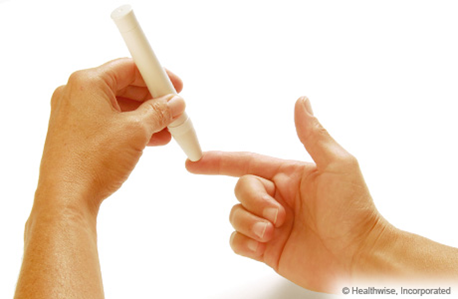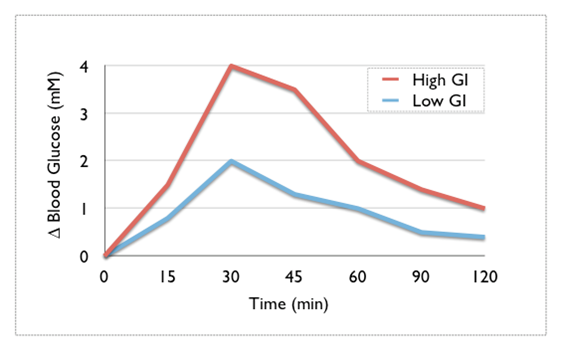You’ve probably heard the term glycemic index but like many of us, you don’t know much about it. Glycemic Index (GI) is a measurement of the effect that carbohydrates have on blood sugar  levels. Like golf, high is bad, low is good. Carbohydrates that break down quickly during digestion and rapidly release glucose (sugar) into the bloodstream have a high GI; carbohydrates that break down slowly have a low GI.
levels. Like golf, high is bad, low is good. Carbohydrates that break down quickly during digestion and rapidly release glucose (sugar) into the bloodstream have a high GI; carbohydrates that break down slowly have a low GI.
Fiber and GI are buddies and are usually referenced together. One of the major players influencing the GI is the amount of fiber per serving. A good source of fiber per serving is 2.5 g; and excellent source is 5 g and will lower GI even more. The higher the fiber, the lower the GI. Nutrition labels will tell you amount of fiber so you can look for good and excellent sources.
Glycemic Index of Common Foods
- Low GI — 55 or below: Beans; legumes; intact grains – wheat, oats, brown rice, barley; most vegetables – broccoli, cabbage, carrots; most sweet fruits with skin on – pe
 aches, strawberries, apples.
aches, strawberries, apples. - Medium GI — 56-69: Not intact whole wheat or enriched wheat, pita bread, potatoes, grape juice, raisins
- High GI — 70 and above: White bread, most white rice, corn flakes, glucose, pretzles
Now that you’ve learned about GI, let’s throw a wrench in the wheel. Here are GI limitations:
- GI doesn’t take into account foods eaten – with other foods.
- There is a wide GI variation in fruits and vegetables depending on the ripeness and variety (Toh-may-toe vs. toh-mah-toe has a whole new meaning!)
- Different people may have a different GI response to the same food.
- GI only measures food’s carbohydrate content. It would be easy to eat too much and fat and calorie just trying to avoid “the carbs”
Tired of reading yet? I am sure your blood sugar is just too low :). When your blood sugar dips down you feel tired and hungry. If it gets too high, your brain signals your pancreas to secrete more insulin which will drop your blood sugar level. It primarily does this by converting excess sugar to stored fat. The quicker your blood sugar rises, the more your pancreas works to pump insulin into your system. Think twice before your next soda pop: at first you may feel a burst of energy, but then comes the storage along with fatigue, irritability, and, alas, more hunger.
Some people will tell you to avoid all carbohydrates because of the “ups and downs” they cause, and focus on the GI instead, but as we learned, all carbohydrates are not bad and avoiding all “carbs” will lead to a variety of health problems. The solution is to aim for a variety of fruits, vegetables, beans, and unrefined grains and don’t forget to check that label for some “excellent” fiber!
